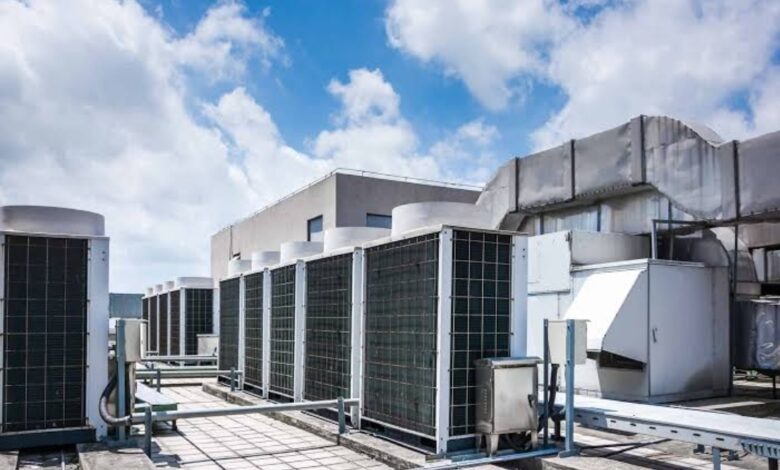Heating up or Cooling Down? Understanding HVAC Energy Efficiency

Heating, Ventilation, and Air Conditioning (HVAC) systems are indispensable for maintaining indoor comfort, but their energy consumption has become a growing concern in an era focused on sustainability. As societies strive to reduce their carbon footprint, understanding HVAC energy efficiency becomes paramount. This article delves into the intricacies of HVAC systems, exploring how they contribute to either heating up or cooling down our energy consumption while also providing insights into sustainable practices.
The Basics of HVAC Systems
To comprehend the energy efficiency of HVAC systems, it is essential to grasp the fundamentals. These systems are intricate networks of components like furnaces, air conditioners, ductwork, and thermostats, all working in unison to regulate temperature, humidity, and air quality.
Understanding the synergy between these elements is crucial for maximizing efficiency and minimizing energy consumption, ensuring a harmonious balance between comfort and sustainability.
Consulting with an HVAC contractor during the installation or upgrade process is advisable, as their expertise can ensure that the system is tailored to the specific needs of the space.
Energy Efficiency Ratings
Energy efficiency ratings, such as Seasonal Energy Efficiency Ratio (SEER) and Annual Fuel Utilization Efficiency (AFUE), are vital considerations for consumers. A high SEER rating for air conditioners and a high AFUE rating for furnaces indicate superior efficiency.
The significance of these metrics, helping homeowners make informed decisions that align with their energy and cost-saving goals.
The Impact of Climate Zones
HVAC energy efficiency is not one-size-fits-all; it varies across different climate zones. Systems must be tailored to specific regional climates to optimize performance and reduce energy consumption.
From the challenges of extreme heat to the demands of colder climates, understanding and adapting to these diverse environmental conditions can significantly impact the efficiency of HVAC systems.
The Role of Regular Maintenance
Regular maintenance is the cornerstone of ensuring HVAC systems operate at peak efficiency throughout their lifespan. From cleaning or replacing filters to inspecting ductwork and ensuring proper lubrication of moving parts, routine upkeep not only enhances performance but also prevents costly breakdowns.the cost-effectiveness of preventive maintenance, highlighting its role in sustaining energy efficiency over time.
Smart Thermostats and Automation
The integration of smart thermostats and automation technology represents a paradigm shift in HVAC energy efficiency. These advancements empower users to optimize temperature settings based on occupancy patterns and external conditions, minimizing energy wastage. Exploring the benefits of these technologies not only showcases their potential for substantial energy savings but also highlights their role in creating a more responsive and efficient HVAC ecosystem.
The Importance of Proper Insulation
Efficient HVAC systems heavily rely on well-insulated buildings. Inadequate insulation can lead to energy loss, as conditioned air escapes, forcing HVAC systems to work harder to maintain desired temperatures. the significance of proper insulation in maintaining energy efficiency, emphasizing how it acts as a critical barrier against energy wastage and contributes to a more sustainable and cost-effective heating and cooling strategy.
Innovations in HVAC Technology
Continual advancements in HVAC technology are transformative for energy efficiency. From variable-speed compressors that adjust to varying heating and cooling demands to geothermal heating and cooling systems tapping into the Earth’s stable temperature, innovative solutions that are shaping the landscape of energy-efficient HVAC systems. Understanding these technologies is essential for consumers looking to invest in long-term, sustainable heating and cooling solutions.
The Connection Between Air Quality and Efficiency
Air quality and HVAC efficiency are intertwined. Systems that ensure proper ventilation and effective filtration not only enhance indoor air quality but also operate more efficiently. the symbiotic relationship between air quality and HVAC performance, emphasizing how prioritizing clean and well-ventilated spaces contributes to both occupant health and overall energy efficiency.
Renewable Energy Integration
The integration of renewable energy sources, such as solar panels and geothermal systems, serves as a catalyst for enhancing HVAC sustainability. these technologies synergize with HVAC systems, harnessing the power of the sun or the Earth’s natural heat to supplement traditional heating and cooling methods. Understanding these integrations underscores the potential for reducing carbon footprints and making HVAC systems more environmentally friendly.
Government Regulations and Incentives
Government regulations and incentives play a pivotal role in steering HVAC energy efficiency. the impact of energy efficiency standards and incentives on the HVAC industry, shedding light on how compliance with these regulations not only ensures a more sustainable future but also provides financial benefits for consumers. Recognizing the importance of aligning HVAC practices with regulatory standards is crucial for both manufacturers and consumers in fostering a greener and more energy-efficient environment.
Conclusion
In conclusion, a nuanced understanding of HVAC energy efficiency is vital for both homeowners and industry professionals. By delving into the basics of HVAC systems, energy efficiency ratings, climate zone considerations, maintenance practices, technological innovations, and the integration of renewable energy sources, individuals can make informed decisions that promote sustainable heating and cooling solutions.
As the world grapples with the challenges of climate change, the HVAC sector stands at the forefront of creating a more energy-efficient and eco-friendly future, emphasizing the need for collective efforts to strike a balance between indoor comfort and environmental responsibility.





